Welcome the Coming of Spring With These Lunar New Year Celebrations

If you thought that there was nothing to look forward to until Valentine’s Day or St. Patrick’s Day, here comes the Lunar New Year, an ancient tradition that celebrates the New Moon closest to spring — why the date changes every year — with one of 12 zodiac animals and five elements. This year, the Lunar New Year falls on Sunday, January 22, which is the start of the Year of the Rabbit.
Whether you’re ready to take on a new year of a rooster, monkey, horse, goat or dragon, take the time to explore this unofficial start of spring at these five great repositories of Chinese (and Buddhist) culture, food, spiritualism and afterlife.
It’s not just dragon dances — and many traditions have been adopted by Korean and Vietnamese communities as well.
1. Chinatown, Los Angeles
To understand Chinese heritage in L.A., you’ve got to understand that where Chinatown is now is actually our second Chinatown. The inhabitants of our original Chinatown were displaced with the construction of the railroad — forcing the uprooted population to relocate and start anew a few blocks away. Generally located in the triangle between the 110 and 101 Freeways and the L.A. River, Chinatown’s cultural heritage extends as far, then, as Union Station and El Pueblo.
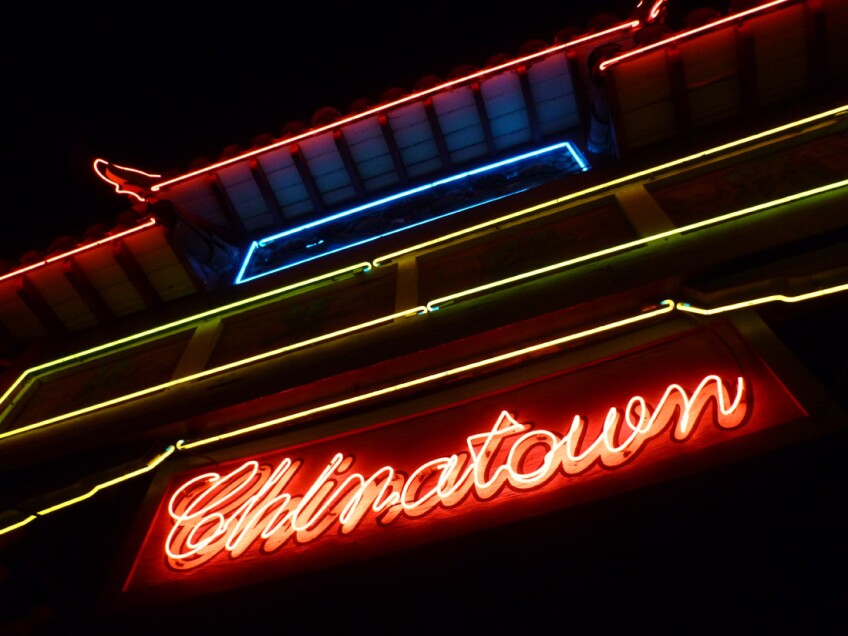
Start exploring at the Chinese American Museum and then move on to the Chinese Historical Society of Southern California to pick up a map for a self-guided walking tour of Chinatown (or be taken on a docent-led tour). The historical society’s office also functions as a Chinatown Heritage Center, with archaeological artifacts on display and an extensive library of books as well as photographs and other research materials.
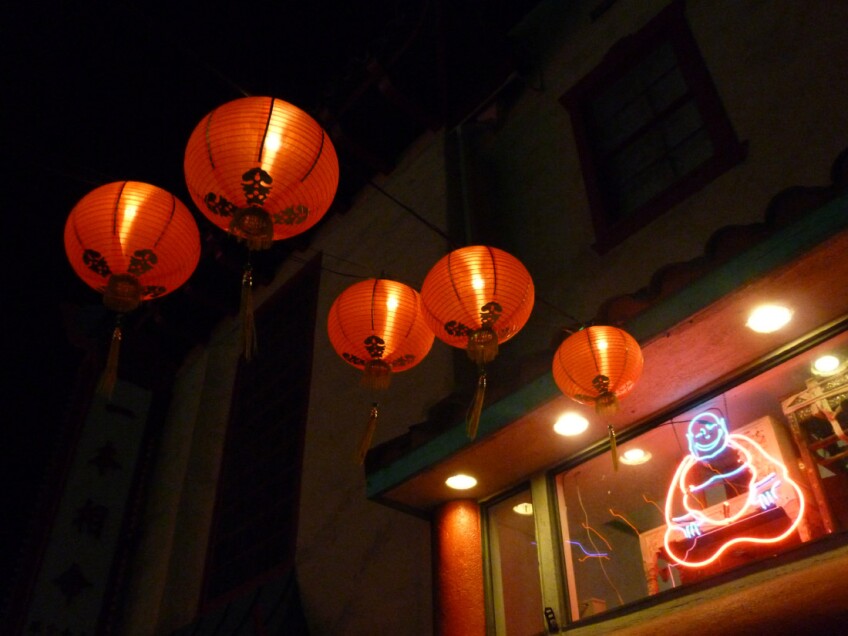
On your walk, stop into the branch of Cathay Bank on the corner of North Broadway and Alpine to give their Chinese abacus a whirl; and before you leave for the day, be sure to admire the classic neon along Gin Ling Way and Chung King Road.

Every year, the Chinese Chamber of Commerce of Los Angeles hosts the annual Golden Dragon Parade in Chinatown — the oldest Chinese New Year parade in Los Angeles. This year, you can catch the 124th annual parade on Saturday, January 28 at 1 p.m., starting at North Hill and Ord Streets. Admission is free, but limited grandstand seats are available for purchase.
2. USC Pacific Asia Museum, Pasadena
There aren’t a lot of museums in this country dedicated to the arts and culture of China and the rest of Asia and the Pacific Islands — but that’s not the only thing that makes the USC Pacific Asia Museum interesting. Even just the building itself — designed in the Imperial Palace Courtyard style found in major buildings of Peking (now Beijing) — is worth a gander, with its arched entryway and evil spirit-repelling roofline.

In the courtyard, you’ll find all the elements of a traditional Chinese garden, like lotus flowers, peonies, stone lions (“Foo Dogs”), dragons, limestone rocks and, of course, bamboo. And the permanent collection inside contains Chinese ceramics and other decorative arts, jade jewelry, Buddhist art and more.

Its free annual Lunar New Year celebration is all-day event that takes place this year on Saturday, January 22 from 11 a.m. to 4 p.m.
3. The Huntington, San Marino
The Huntington’s botanical gardens are so sprawling, you may not have realized that, in addition to their traditional Japanese Garden, they’ve also got a Chinese Garden: the Garden of Flowing Fragrance, one of the largest Chinese-style gardens you’ll find outside of China itself. Every Wednesday, you can find traditional Chinese music being performed there from 1 to 3 p.m. (free with general admission).

Stroll slowly down the pathways and across the bridges as you gaze at the Chinese architecture, limestone rock, carvings, calligraphy and, of course, botanicals. This is one of the most detailed areas of The Huntington, so take your time with it. You’re sure to find something new with each subsequent visit (and with the change of each season).
Ring in the Year of the Rabbit at the Huntington with lion dancers, martial artists, musicians, and artists during its annual Chinese New Year Festival in the Chinese Garden, which takes place this year on Saturday Feb. 4 and Sunday Feb. 5 from 10 a.m. to 5 p.m. each day. Note that advance tickets and reservations required for all visitors and Members, and capacity is limited.
4. Hsi Lai Temple, Hacienda Heights
If you want to be really immersed — and perhaps even joyfully overwhelmed with Lunar New Year celebrations — visit the Hsi Lai Temple for its “New Year Festival of Light and Peace.” Translated as "coming west," Hsi Lai was built 20 miles east of Los Angeles on a 15-acre parcel of land, after much controversy and debate amongst the non-Buddhist neighboring residents.
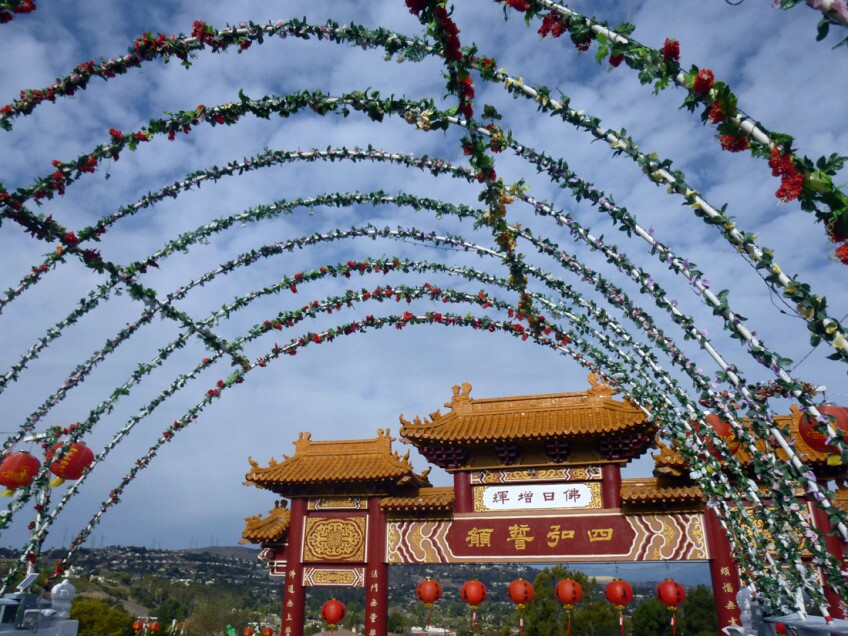
To enter, you walk through a symbolic gate, surrounded by silk flowers and Chinese lanterns, through the Bodhisattva Hall into the main courtyard where you’ll be surrounded by baby Buddhas and guardian lions. This time of year, the otherwise quiet monastery gets transformed into a festival of drumming, gongs and stinky tofu.
Light incense and offer it to Buddha in honor of your ancestors. Buy a candle in a pineapple-shaped votive holder and light it in hopes of prosperity. Make a wish and throw a penny in the pond (or in any of the many other fountains and wishing wells on the property), or toss a ribbon onto the wishing tree. And then get away from it all in the Avalokitesvara Garden, where you can purify your mind and let the Deva Kings protect you from being harmed by unwholesome elements.
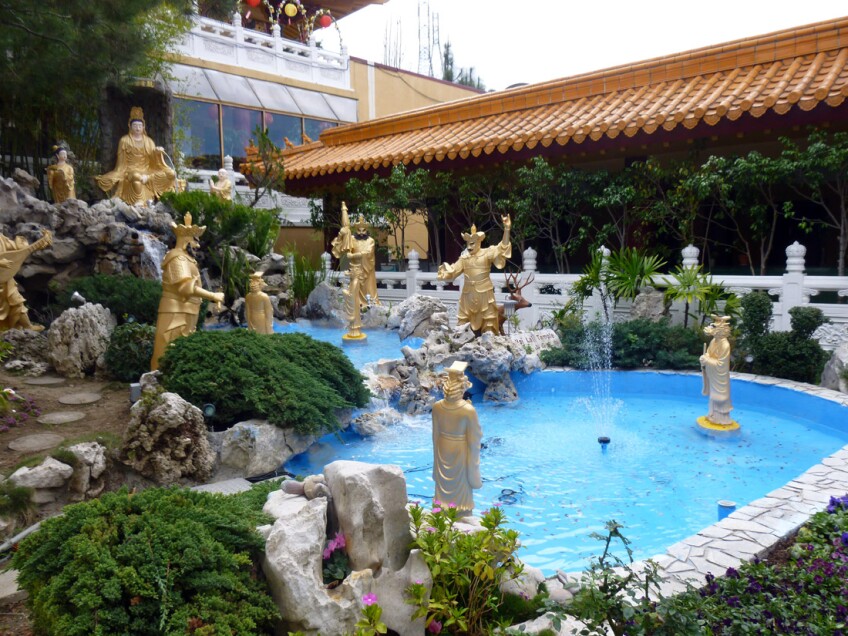
This year, everything kicks off with a Chinese New Year’s Eve Dharma service on Saturday, January 21 at 7:30 p.m. in the Main Shrine and then continues on Sunday, January 22 at 5 a.m. with a day chock full of blessings ceremonies, food fair (10 a.m. to 3 p.m.), cultural performances (starting at 12:30 p.m.) and offering ceremonies, including a Peace Lantern Festival. Celebrations continue through Feb. 5 — for schedule details, see the temple's Facebook page.
This year there will be no on-site parking — so proceed to the off-site parking location at Puente Hills Mall, and take the shuttle instead. Although it's mostly Buddhists who go throughout the year, anyone of any faith or cultural and ethnic background is welcomed to take a self-guided tour now or a guided tour in the off-season. Prior to Jan. 22 and after Jan. 30, you'll need to make an online appointment to visit. Open hours from Jan. 1 to Feb. 5 are 9 a.m. to 5 p.m. weekdays and 8 a.m. to 8 p.m. weekends.
5. Rose Hills Memorial Park & Mortuaries, Whittier
Since the spirits of ancestors are called upon to celebrate Chinese New Year with their families, it’s appropriate to visit the Buddhist Columbarium at Rose Hills Memorial Park, one of the places in the San Gabriel Valley where Buddhists are laid to rest (usually, cremated and either interred in a cemetery plot, or housed in the columbarium, a kind of mausoleum for urns of cremated remains).

It is the largest Buddhist pagoda in the U.S., situated on the top of a hill in the largest cemetery in the U.S., in a city whose sister city is Changshu, China. Its three levels of niches (for the urns) are well-protected by plenty of figures cast in bronze, which surround the pagoda on the outside at the top level and guard the niches on the inside.

Climbing to the top reveals spectacular views of the San Gabriel Valley and mountains and provides a quiet place for meditation and spiritual awareness during Chinese New Year, as there’s no official festival celebration in the memorial park. (Its high season is around the Chinese Qingming Festival, when families come out in droves to visit the graves of their ancestors.)

However, you can find plenty of other festivals nearby in Monterey Park and Alhambra, as well as The 10,000 Buddha Relics Collection on display from Saturday, Jan. 21 to Sunday, Jan. 29 from 10am to 7pm at Wei Mountain Temple in Rosemead.
Bonus: L.A. Chinatown Firecracker 5K/10K Run/1K Kiddie & PAW’er Dog Run/Walk & 20/40-Mile Bike Ride
L.A.'s Chinatown Plaza will also be the site of the 45th Annual L.A. Chinatown Firecracker run/walk and bike ride, one of the oldest and largest such events in the country. Online registration is currently open to participate either in-person or virtually — starting with a 20- and a 40-mile bike ride and a dog walk on Feb. 18. Then, on Feb. 19, there's a 5K run/walk, a 10K run (through Elysian Park and to the Dodger Stadium entrance), as well as a kiddie run.
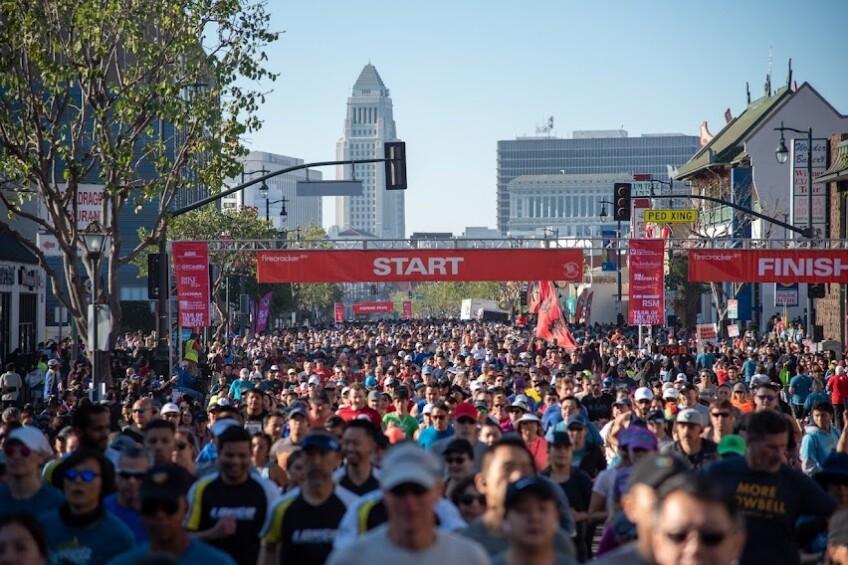
If you're not ready to ride or race, don't worry — this is an exciting spectator event as well. The opening ceremonies in Chinatown (which take place before the first race on both Saturday and Sunday) feature lion dancers and the traditional lighting of 100,000 firecrackers; and the Firecracker Festival (also taking place on both days) includes vendors, a Boba Garden and chalk art festival. The closest address is 943 North Broadway.
This article was updated on Jan. 17, 2023 with the most current information available.




